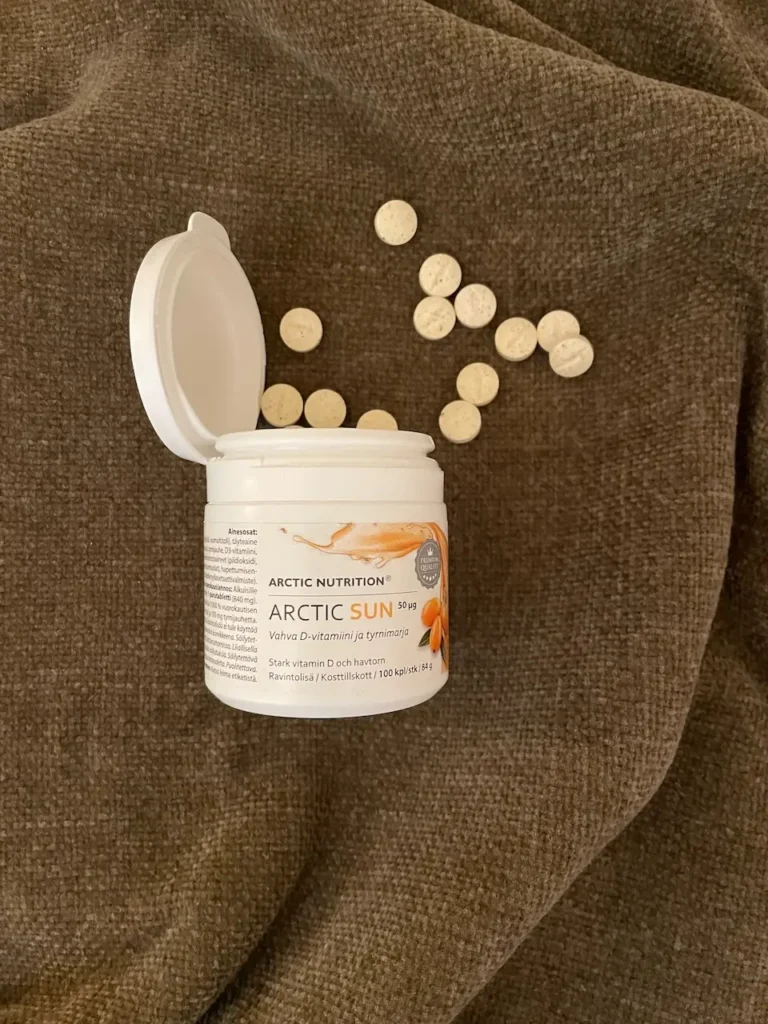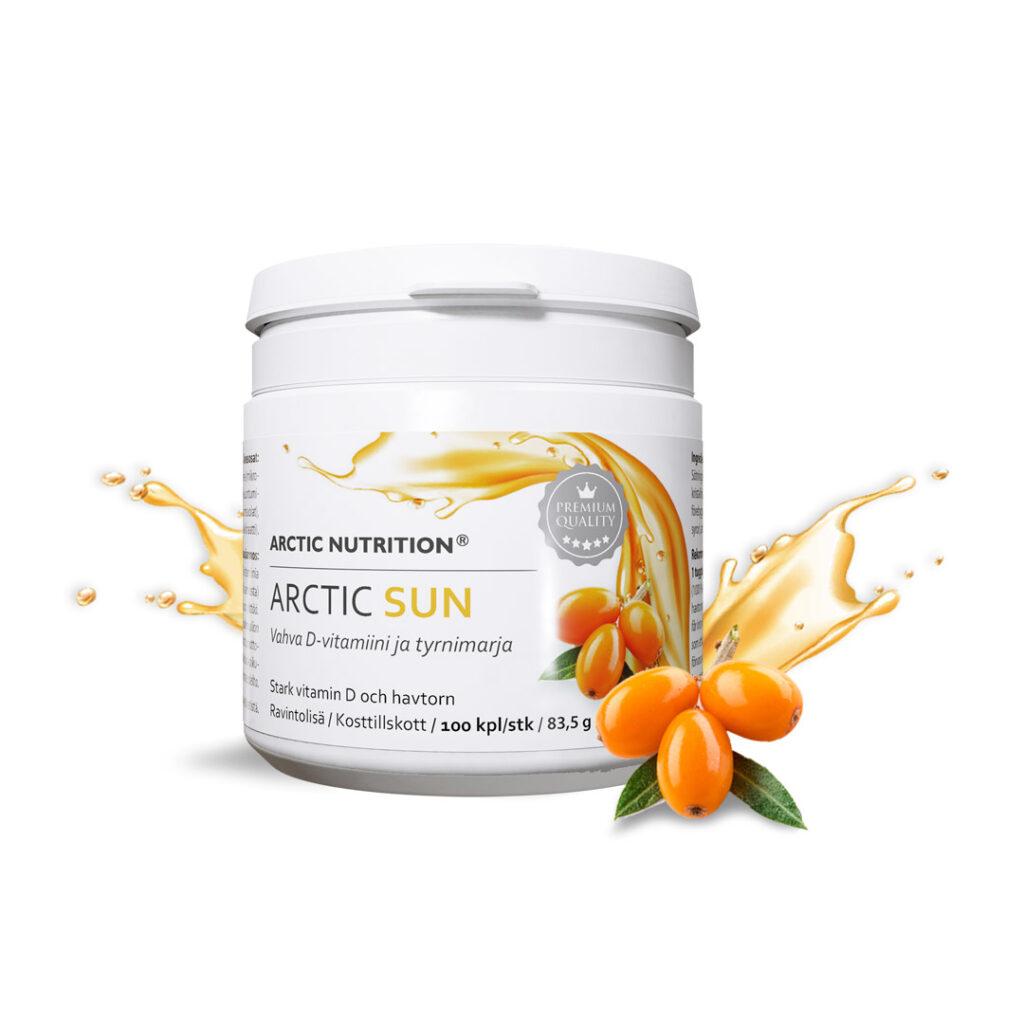Vitamin D: Why Europeans Should Prepare for Autumn Now
As autumn approaches and August transitions into September, sunlight dramatically decreases across Europe. At northern latitudes, effective vitamin D-producing sunlight is only available between April and September and most reliably when the sun is high, around midday. This means our body’s natural vitamin D production essentially stops completely from October to March. While you might expect southern Europeans to have better vitamin D status due to more sunshine, research shows a paradoxical situation across the continent.
What Makes Vitamin D So Special?
Vitamin D is actually a hormone precursor that affects every cell in the body through vitamin D receptors (VDR). It regulates functions in 37 different organs and controls over 2,000 genes. This makes it one of the most important nutrients for our overall well-being.
When our skin is exposed to the sun’s UVB radiation (wavelength 290–315 nm), D3-vitamin is formed from 7-dehydrocholesterol. This travels to the liver, where it converts to calcidiol (25(OH)D) and this is the form measured in laboratory tests. Finally, the active hormone form calcitriol (1,25(OH)2D) is produced in the kidneys.
Important note: Vitamin D production in the skin and kidneys requires adequate magnesium intake. Europeans’ insufficient magnesium intake contributes to vitamin D deficiency across the continent.
Why Is Vitamin D Deficiency a Serious Problem?
Recent research shows that vitamin D deficiency is a much broader public health problem than previously thought. Adequate vitamin D intake has been shown to reduce the risk of numerous diseases:
- Osteoporosis and bone fractures
- Cardiovascular diseases
- Multiple cancer types (especially colorectal, breast, and prostate cancer)
- Type 1 and 2 diabetes
- Neurological diseases (MS, depression)
- Autoimmune diseases (rheumatoid arthritis, psoriasis)
- Infectious diseases (influenza, respiratory infections)
A 2014 study by Cambridge University found that human mortality was lowest when blood vitamin D levels were at least 90 nmol/L.

Vitamin D and the Immune System
Vitamin D plays a central role in regulating immune system balance. It acts as a kind of ”power source” for T-cells. When a phagocyte captures a pathogen and presents it to a T-cell, the T-cell produces a vitamin D receptor. Without adequate vitamin D, T-cells never awaken to defend our body.
Vitamin D deficiency predisposes to autoimmune diseases and increases susceptibility to infections. Especially during winter months, those suffering from vitamin D deficiency experience more influenza and respiratory infections.
The Concerning State of Vitamin D Across Europe
Recent comprehensive European studies reveal a widespread vitamin D deficiency crisis that affects the entire continent:
Overall European Statistics:
- 13% of Europeans suffer from severe vitamin D deficiency (below 30 nmol/L)
- 40.4% of Europeans have vitamin D deficiency (below 50 nmol/L)
- During winter months (October-March), up to 17.7% suffer from severe deficiency
Regional Variations Across Europe:
- In Northern Europe less than 20% of the population suffers from vitamin D deficiency
- In Western, Southern, and Eastern Europe 30-60% suffer from deficiency
- Paradoxically, the Northern Europe has better vitamin D status than Southern and Eastern Europe
Why Even Southern Europe Struggles:
Despite abundant sunshine, vitamin D deficiency is common in Mediterranean areas due to extensive sunscreen use, low consumption of vitamin D-rich foods, and absence of systematic food fortification programs.
At-Risk Groups Across Europe:
Young children, adolescents, pregnant women, elderly people (especially those in institutional care), and non-Western immigrants face the highest risk of deficiency.
Notable Success Story:
Finland stands as an exception among European countries, where recent national fortification policies and high consumption of oily fish have significantly improved population vitamin D status. Most other European countries struggle to meet vitamin D recommendations.
Official Recommendations vs. Research Evidence
European vitamin D recommendations vary by country, but most follow similar guidelines of 10-15 micrograms daily for adults. However, a 2017 study suggests these recommendations may be based on flawed statistical analysis.
The American Institute of Medicine (IOM) initially estimated that 15 micrograms daily would suffice for 97.5% of the population. Canadian statisticians’ reanalysis proved this incorrect, because in reality, 15 micrograms daily only ensures population vitamin D levels exceed 27 nmol/L!!
The European Calcified Tissue Society advises:
- Severe deficiency (below 30 nmol/L) is found in over 10% of Europeans
- Food fortification and vitamin D supplements are needed for risk groups
- Standardized measurement methods should be implemented across Europe

Arctic Sun ☀️ An Effective Solution for Autumn Challenges
Arctic Sun chewable tablets contain 50 micrograms of biologically active D3-vitamin plus sea buckthorn powder. One tablet daily provides 1000% of the daily reference intake.
Why D3-vitamin is the best choice:
- D3-vitamin (cholecalciferol) utilization is significantly better than D2-vitamin (ergocalciferol)
- D3 is the same form the body naturally produces in skin from sunlight
- More effective at raising serum vitamin D levels
Sea buckthorn provides added value:
- Rich in vitamin C and antioxidants
- Vitamin E and beneficial fatty acids
- Supports the immune system during autumn transition
Practical Guidelines for Vitamin D Use
Before starting supplements:
- Measure your vitamin D level in blood (S-D-25 or P-D-25)
- If your level is below 70 nmol/L, you likely need supplementation
Individual dosing:
- Arctic Sun provides 50 micrograms daily, which is suitable for most people, also for kids
- If your vitamin D level is very low (below 50 nmol/L), this is a good starting dose
- Monitor levels: retest after 3 months
Enhancing absorption:
- Take vitamin D with a fatty meal
- Ensure adequate magnesium intake
- Omega-3 fatty acids (like Arctic Oils) support vitamin D receptor function
Sun Is Still the Best Source, When It Is Available
Holick recommends 5–10 minutes of sun three times weekly on limbs and face. In northern European conditions, this is only possible during summer months, and effective sunscreens prevent vitamin D production. Even in southern Europe, lifestyle factors often limit adequate sun exposure.
Winter trips south can improve vitamin D status, but be careful about skin burning, since it provides no additional benefit for vitamin D production and it is bad for your health.
Finally: Prepare for Autumn in Time
When sunshine decreases in October across Europe, our body’s vitamin D stores begin depleting rapidly. The half-life of S-D-25 is about 3 weeks, so levels drop significantly without additional intake. This affects Europeans from Scandinavia to the Mediterranean.
Arctic Sun provides a reliable way to ensure adequate vitamin D intake throughout autumn and winter, regardless of your location in Europe. One chewable tablet daily contains 50 micrograms of D3-vitamin and 100 mg of nutritious sea buckthorn powder, which is a simple way to support your health during the year’s darkest months.
With over 40% of Europeans suffering from vitamin D deficiency, taking proactive steps before winter arrives is wise and it’s essential for optimal health.
Remember: Adequate vitamin D intake is for your bones, but also it’s an investment in your entire body’s well-being and disease risk reduction.
Sources:
- https://www.duodecimlehti.fi/duo95160
- https://biohakkerikauppa.com/blogs/biohakkerin-uutiset/kaikki-mita-sinun-tarvitsee-tietaa-d-vitamiinista
- https://pmc.ncbi.nlm.nih.gov/articles/PMC5527850/
- https://pubmed.ncbi.nlm.nih.gov/30721133/
- https://www.mdpi.com/2072-6643/16/6/867
- https://www.nature.com/articles/s41430-020-0558-y
- https://www.frontiersin.org/journals/nutrition/articles/10.3389/fnut.2023.1070808/full
- https://www.nature.com/articles/s41598-022-23416-1
